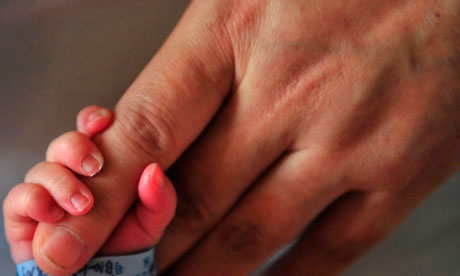-

-
- Guardian Professional,Monday 30 July 2012 10.03 BST

A year on from my appointment as the government's adoption adviser, it is helpful that the House of Lords has appointed a select committee to examine the legislative implications of the proposed reforms. I had the privilege of speaking to the committee earlier this month.
I reminded the committee that there were about 24,000 adoptions a year in the mid-70s. Contrary to popular anecdote, these were not all children relinquished by unmarried mothers. About half of the children adopted each year in the 70s were born to married women. Nevertheless, this was a different era and we should expect annual adoption numbers to be much lower now. But would we, in 1975, have expected numbers to have fallen to only 3,000 last year?
The number of children needing adoption will always be a small proportion of the children in care population. Those who suggest I think adoption is the outcome for most children in care haven't read anything I've written. To be clear: I believe adoption will only ever be suitable for a small minority of children in care. But a bigger minority than just 3,000 a year.
I think that belief is evidenced by the reality of the number of children who are waiting for a new start in their lives. There are now more than 5,000 children in England with placement orders. But the number of parents cleared for adoption is probably less than a third of that figure. That means, to be blunt, that any debate about court delays is something of a distraction at the moment. The courts have concluded the cases of 5,000 children, decided adoption is best for them, and most of them have nowhere to go.
But I told the committee that the reform programme is very nearly complete and will make a significant difference. Ministers have welcomed:
• The launch in the new year of a robust but faster adopter assessment process including fast-track arrangements for past adopters. This was and remains my absolute priority;
• Local authority adoptions scorecards which, despite an initially negative response at the time of publication are beginning to have an impact;
• A commitment to a radical reform of the law about ethnic, cultural, religious and linguistic factors when matching a child with prospective adopters;
• An obligation on local authorities routinely to consider placing children with adopters in advance of the placement order;
• A lot of progress on post-adoption support. The concept of an adoption support passport is being developed;
• The creation of a new adoption gateway, which will provide would be adopters with all the information they need to consider adoption and then help in finding the adoption agency which is right for them.
Additionally, the government is exploring the reform of adopter leave and adopter allowances to match maternity leave arrangements (the effect of which should not be underestimated), and, after recent advice from me, has launched a consultation on child and birth family contact (both before and after adoption) and the challenge of achieving adoption for sibling groups.
I recently chaired a meeting with some industry leaders in marketing to see how we can attract more adopters and we are working hard – not least with the Association of Directors of Children's Services – at how we can make greater use of voluntary adoption agencies.
I owe ministers one remaining piece of advice about how the matching process between adopters and child can be safely accelerated, that being a source of considerable and damaging delay for children.
The last year has not been without controversy. I know that some think that adoption has been getting too much attention and wonder why there has not been an equivalent focus on fostering. The latter complaint bemuses me. Last year, from a care population in England of about 66,000, there were 47,000 children in foster care but only 3,000 adoptions. It seems to me to be pretty clear why we needed urgently to address that. Too many children, right now, need adoption and are missing out.
Martin Narey is a government adviser on adoption. He was chief executive of Barnardo's from 2005 to 2011.

